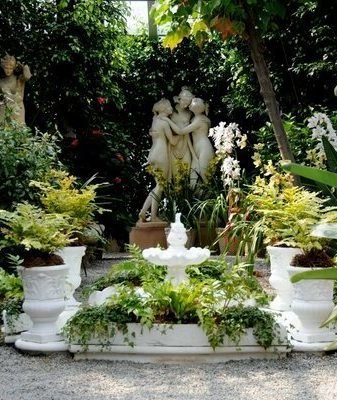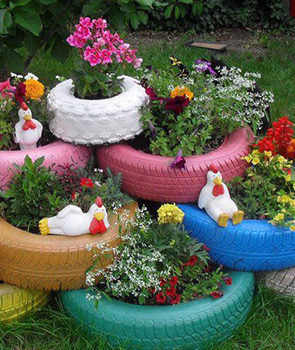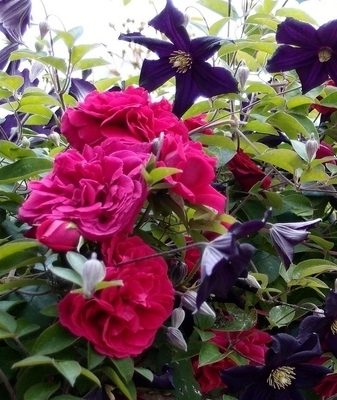Interview with an experienced gardener about arranging a summer cottage by the lake
A traditional suburban area is a few hundred square meters in a garden partnership, closely bordering on neighbors. And at the same time, not all owners are lucky with the surrounding landscape. But you can't say the same about Lyudmila Glushanina's dacha in a sparsely populated village in the Vitebsk region! Her garden is located in a picturesque place - the edge of blue lakes. Cottage by the lake, and right from the site - an approach to the reservoir. You will not find uninvited guests on your shore, because each resident has his own pier.
Lyudmila, what are the features of life at a dacha by the lake?
- Since our dacha is by the lake, in the spring we clean the shore from dry reeds and fallen leaves. Only then we swim, fish, sometimes we sail on a catamaran. The summer cottage by the lake is accompanied by strong winds, so the site is protected by plantings. From the path leading from the bathhouse to the reservoir, one can see ferns and junipers, to the left behind them are forest spruces, to the right is a raspberry tree. Bird cherry and linden grow on the shore. The soil here is loamy, sourish, but not heavy. Everything that we plant takes root. There is no vegetable garden as such: one greenhouse and a couple of beds with herbs, garlic and onions.
Summer cottage by the lake ... how do you strive for a low-maintenance garden?
- My personal opinion is that there are no absolutely low-maintenance gardens. Now I give a lot of energy to plants in order to further reduce the time for working with them.
Who are your favorites?
- Of course, the most unpretentious inhabitants of the garden. Let's say the girlish grapes fit perfectly into the design of my summer cottage by the lake. This vine is indispensable where you need to decorate something, hide from sight. In general, she can be praised endlessly. The plant is winter-hardy, does not require any shelter and removal from the support. Does not get sick, is not damaged by pests. It grows quickly and on any soil, in the sun and in the shade (only here in the fall the leaves do not acquire a crimson-purple color, but remain green). Reproduces well. In the spring, put the whip in the groove, pour it with water, and after three years your shed will completely disappear under the beautiful foliage. Yes, girlish grapes are considered the aggressor. But if in the fall, after leaf fall and before stable frosts, pruning is carried out by removing creeping shoots, there will be no problems. A fence entwined with a liana is an excellent background for plants with unusual foliage, like the purple bladder.
I love junipers very much. From the last landings - Juniper scaly Blue Star. Compact bush of bluish color with a blue tint. It grows very slowly. At the age of 10, it reaches a height of about 40 cm, and the crown diameter is up to 2 meters. But I am in no hurry to see it large, as the plant takes on a new shape as it grows. In the summer I arrange sprinkling for the handsome man. Spring or autumn are good breeding times for junipers. I dig in branches located close to the ground, after removing the bark a little from the place that will come into contact with the soil. I fall asleep and press down on top with a small stone or pin with a bent electrode. A year later, this shoot with the formed roots is separated by pruning shears from the mother bush and transplanted.
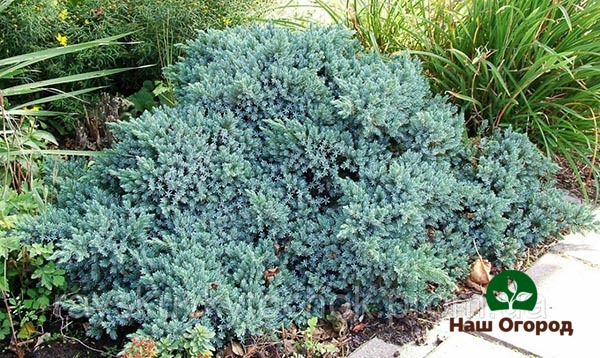
What flowers do you prefer?
- In the spring I admire the tulips. What is a garden without bulbs? Even at this time, the seaside armeria blooms beautifully. Once I acquired a small bush. Regularly in the fall I divided it, as a result I got a border along the path. I like petunias, but this season I decided to give them up. Because I fell in love with lobelia. This graceful plant with delicate flowers blooms until late autumn. Petals come in different colors - white, blue, pink, purple. Lobelia, in my opinion, is not such a "slob" as petunia, after which you do not need to remove faded buds.
Once she settled an alissum in the garden. Now he gives self-seeding every year. The bushes are densely covered with white flowers. She laid a jug next to the plantings - as if milk was flowing out of it.
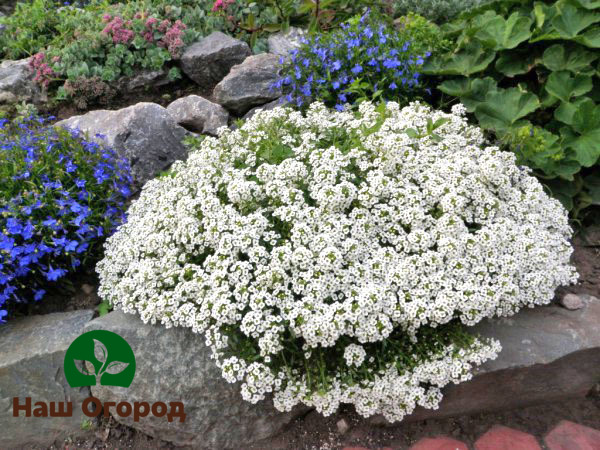
One of the perennial favorites that I planted in my summer cottage by the lake is Volzhanka, or Aruncus. It grows where the sun shines most of the day. Absolutely hardy plant. It blooms in mid-summer with luxurious panicles, but thanks to the openwork leaves, it is decorative from spring to autumn. At the age of five, in the fall, she dug up a volzhanka, divided the rhizome into three parts and planted it. I also have trendy hydrangeas. I must say that these beauties effectively solo in the garden. I planted the tree-like hydrangea on the way from one zone of the garden to another. It attracts attention in an arched frame with clematis and my dacha by the lake looks just gorgeous.


